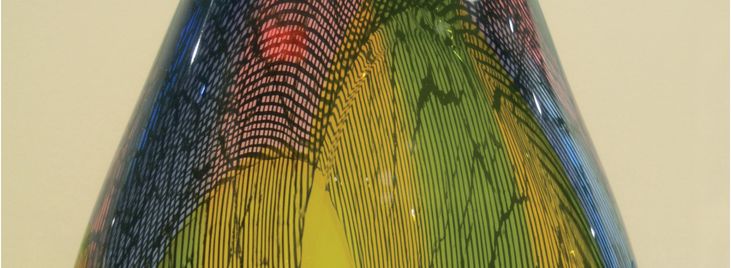On the island of Murano in northern Italy, master glassmaker Giampaolo Seguso was born into a legacy family with more than 600 years of glassmaking experience. Seguso trained under his father, Archimede, working for him for almost 30 years until he made his own path, perfecting a glassmaking technique called filigrana.
A Venetian technique dating back to the 16th century, filigrana requires the glassmaker to take glass and stretch it into canes by putting it through fire. Afterwards, these canes are cut into various lengths, laid out onto a flat surface, causing the canes to meld together under pressured heat. The glassmaker would then roll these canes on a blowpipe and reheat them. This causes the canes to soften, making it malleable to form. The results of Seguso’s years of glassmaking appear from now until June 13, in his 33-filigrana vase collection called La Ragnatela (spider web in Italian) on display at Fairfield’s Bellarmine Museum of Art. As Seguso tells the CT Post, he “imbues each of his glass artworks with soul and spirit through his poetry.”
The exhibition is on loan from The Corning Museum of Glass, and sponsored by the National Endowment for the Humanities, Morris Media Group and Whole Foods Market Fairfield.




Leave a Reply